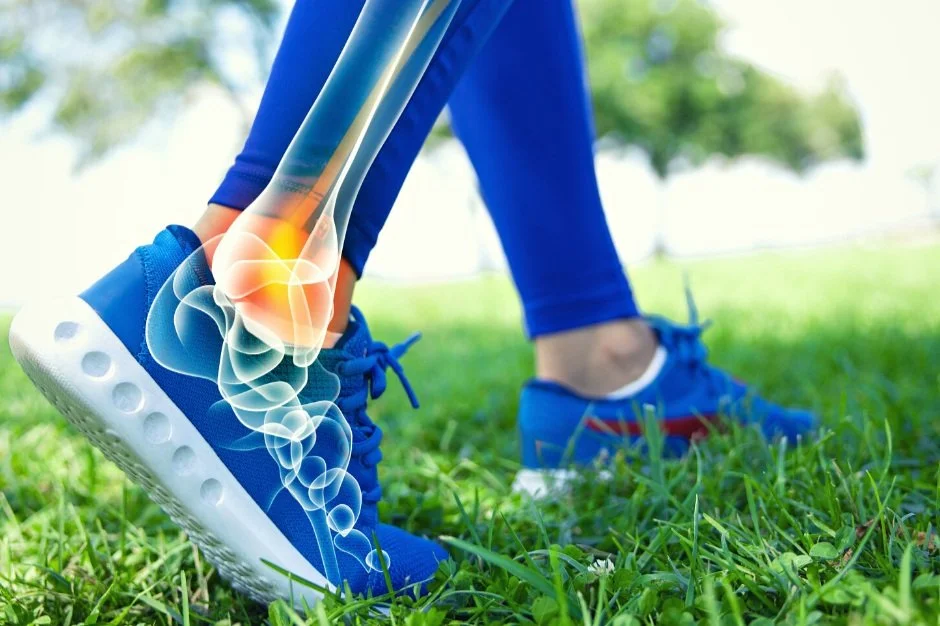Physical Therapy for Peroneal Tendinopathy
Peroneal tendinopathy is a condition involving inflammation of the peroneal tendons, which run along the outer ankle bone and side of the foot, often due to overuse or a sudden increase in activity. Physical therapy can successfully treat peroneal tendinopathy, helping reduce strain on the ankle and foot and strengthening the ankle muscles to withstand the demands placed on them. Research supports gradual resistance training programs, modification of daily activities and exercise regimes, and manual therapy techniques as most effective in the management of peroneal tendinopathy all of which physical therapists provide to patients.
What is Peroneal Tendinopathy?
Peroneal tendinopathy involves irritation and inflammation of the peroneal tendons, which run along the outer ankle bone and side of the foot. These tough bands of tissue connect the muscles of your lower leg to the bones in your foot, stabilizing and balancing your foot and ankle and allowing you to point your ankle and foot downward.
Peroneal tendinopathy often develops over time due to overuse or a sudden increase in activity that places too much stress on the peroneal tendons. Dysfunction of the peroneal tendon can occur when the capacity of the tendon is outmatched by the load and demand placed on it from being overworked. If the foot doesn’t hit the ground correctly when walking or running, this can create more stress on the tendon. If the foot hits the ground on the outside of the foot, the muscles and tendons must work harder to keep the foot and ankle stable. This leads to overuse and enlarging, thickening, and swelling of the tendons.
Other factors that contribute to the development of this condition include athletes who play sports involving a lot of ankle movements, being over the age of 40, not stretching before activity, having had previous tendon or ankle injuries, high arches in the feet, living with diabetes, rheumatoid arthritis, or osteoarthritis, a new workout regime, increasing intensity of workouts too quickly, poor training techniques, improper footwear, and training with inadequate rest. If peroneal tendinopathy is left untreated, it can lead to a partial or full tear of the peroneal tendons.
Common symptoms of peroneal tendinopathy include:
Pain and soreness in the back and outside of the lower leg and ankle
Pain that increases with more activity and is more acute when the ankle turns in or out
Swelling and warm to touch in the tendon area and behind the ankle bone
Weakness when actively moving foot in an outward direction
Pain when pushing off the ball of the foot when walking or running
Pain when walking on sloped terrain that turns the foot inward and ankles outward
Physical Therapy for Peroneal Tendinopathy
Physical therapy can successfully treat peroneal tendinopathy, helping reduce strain on the ankle and foot and strengthening the ankle muscles to withstand the demands placed on them. Current research supports gradual resistance training programs, modification of daily activities and exercise regimes, and manual therapy techniques as most effective in the management of peroneal tendinopathy all of which physical therapists provide to patients.
The physical therapist first completes a thorough evaluation to observe movement (running, walking, stair climbing), assess the strength and posture of the ankle and foot region, and analyze gait mechanics and muscle imbalances contributing to the condition. From there, the therapist designs a treatment program tailored to the patient’s specific condition. First, the therapist manages inflammation and pain before moving on to gradually building load tolerance in the tendons using resistance training and regaining range of motion using manual therapy.
Physical therapy treatment for peroneal tendinopathy includes:
Pain management using ice and heat modalities
Patient education on how to gradually increase and maintain an exercise training regimen
Proper footwear and orthotics as proper footwear ensure the ankles and feet have the support they needed. Custom orthotics (corrective inserts in shoes) helps reduce stress on tendons.
Manual therapy involves hands-on techniques to gently mobilize the joints in the foot, ankle, and lower leg. Soft tissue mobilizations help to loosen tightness, increase circulation, and relieve pain. The therapist may also perform gentle range-of-motion exercises to help the ankle and foot regain full range of motion.
Strengthening exercises using bands and weights to strengthen the ankle, foot, and lower leg muscles. Strengthening the peroneal muscles and tendons helps this region withstand greater loads placed on it. The therapist may incorporate hopping, single-leg balance, and plyometric training to help the ankle relearn to tolerate high-velocity forces from running and jumping.
Functional training includes work and sport-specific exercises
Are you currently experiencing persistent outer ankle pain and weakness in the ankle? Work with our physical therapists to address your ankle pain early and return to activity with renewed strength!

